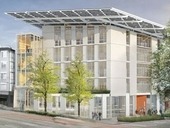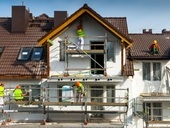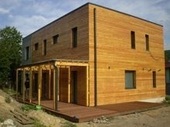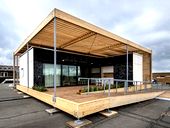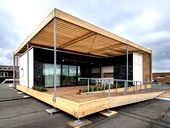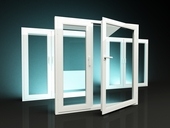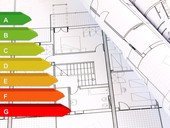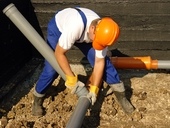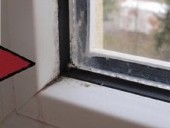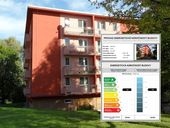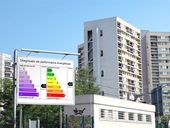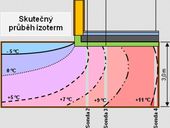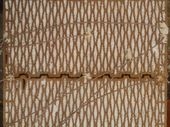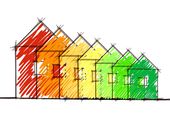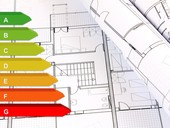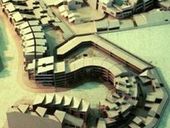Described as the greenest commercial building in the world, the Bullitt Center in Seattle, Washington pushes the envelope in urban sustainability. The six-story, 52,000-square-foot structure is designed to meet stringent requirements of the Living Building Challenge (LBC)—using photovoltaic cells to generate enough electricity to sustain the needs of its tenants, recycling its own water and waste, and reducing energy use by more than 80 percent compared to an average office building.
LBC requirements stipulated that the Bullitt Center meet a number of criteria, including responsible site selection, 100 percent on-site renewable energy generation, 100 percent of water needs provided by harvested rainwater, and on-site waste management.
The aim is to lower CO2 emissions and reduce the environmental footprint of the building. Target life cycle 250-year is a key part of that goal.
Archiv článků od 17.6.2013 do 27.10.2014
Prague Building Regulations – The Analysis of the Fundamental Principles of Territorial Requirements
Prague building regulations currently represent debated and controversial topic among both professionals and the public. This is a new concept of law to which they are greatly implemented basic knowledge of urban theory and practice. The article summarizes the basic principles of the new regulation in the field of territorial requirements.
Which buildings can receive grants from the Green Savings Programme, amount of the grants and what technical details cover the energy audit? Part A in this article covers the specific questions (building’s envelope rennovation). A sample of 16 family houses that comply with all the required conditions of the New Green Saving Programme from 2013 is further described in this article.
The airtightness measurements of building are important for construction of low energy and passive houses nowadays. It is very effective method to control quality of building envelope and look up for air leakages. These defects of building envelope is a source of wasted energy, because conditioned air heated or cooled is what is leaking out. It is better to find and seal the air leaks, and keep that conditioned air inside.
This study deals with investigation of research sample – 69 family single wooden houses. This amount includes multiple measurements. The construction method of building envelope is based on timber frame. Family single houses are located in Slovakia and border Lower Austria. The year of construction varies from 2011 till 2013. Airtightness measurements were conducted according standard STN EN 13829 (2011). For this investigation, there was Q 46 Blower Door Test equipment used, manufactured by Retrotec Inc., USA. The investigation of airtightness measurements of building was processed by statistical methods. Outcomes are the expressed value air change rate at 50 Pa. The results are divided to a few parts by significance. The first part describes air change rate at 50 Pa dependdant on number of storey and shape of the tested buildings. In the next part of investigation there is significance of difference between method B and A compared. The most interesting part is presented by percentage frequency of air leakages through building envelope. Analysis confirmed improving requirements airtightness of building.
In October 2013 in Orange County Great Park in city of Irvine, California, took place the sixth edition of the prestigious international competition of universities U.S. Solar Decathlon 2013. This round took part also Team Czech Republic from the Czech Technical University in Prague, which finished at overall third place. The article describes in detail building services used in the AIR House.
In October 2013 in Orange County Great Park in city of Irvine, California, took place the sixth edition of the prestigious international competition of universities U.S. Solar Decathlon 2013. This round took part also Team Czech Republic from the Czech Technical University in Prague, which finished at overall third place. The article describes in detail rules of competition and technical solutions used in the AIR House.
New Civil Code enacts special type of solidary obligation to remedy the defects of building constructed under contract for works. All subcontractors (suppliers) of constructor, investor`s technical supervisors or construction project designer are solidary responsible together with the constructor in case the defect can be attributed to the performance they provided. However, these parties need not to be the parties to the contract for works itself (and usually are not) as their obligation arises by law.
The remedies that the investor can claim on these co-debtors, however, are limited to right to demand the repair of the defect. Investor may demand remedy on any of the co-debtors and all the co-debtors are obliged to perform the remedy in full.
The investor has to give notice to the debtor within a reasonable time. The notice can be sent to any of the co-debtors but we advise all investors to give notice always to the constructor first or together with the other co-debtors.
This paper deals with the time period of condensation on the inner surface during the day and the severity of this phenomenon. Condensation on the surface structure occurs when the surface is cooled to or below the dew point temperature, which is a function of temperature, relative humidity and atmospheric pressure.
Measurement of short term water absorption and thermal conductivity was carried out on samples of traditional insulation and the insulation samples from natural fibers. Further, the measured change in thermal conductivity after soaking and subsequent drying of the original weight.
The results showed that the thermal insulation of natural materials retain their original properties – thermal conductivity, shape, compared to conventional insulation.
From the 1st January 2013 new legal and technical regulations are coming in force, which have an impact on higher requirements on energy use for heating and this way also on energy use for heating and cooling. These requirements are stricter not only on the new, but also on major renovated buildings. Proposed measures must fulfil hygienic and energy requirements set by STN 73 0540-2: 2012. Calculated thermal protection properties of building structures are influenced by the properties of used components. Conformity of achieved real properties with the design of building depends from the accuracy of components properties, their real quality and quality of the installation. The design values for construction materials (products) are set in STN 73 0540-3: 2012.
Existing procedures for determining heat transfer in the soil. Temperature measurements in the soil under the floor of the experimental house MSDK at the Technical University in Ostrava. The difference between the calculated temperatures and actually measured. Theoretical and real temperature field in the soil.
Blocks for masonry with integrated insulation material are known over 30 years. Especialy hollow clay bricks have low U value due to optimalization of their geometry with low thermal conductivity of ceramic body. Finaly integrated insulation material into the holes in bricks results to increasing of thermal insulation properties. Article is focus on behavior of hollow clay bricks with and without integrated insulation material in dynamic heat load.
The development of "national plan for increasing the number of nearly zero energy buildings" is a major task of the European Parliament and of the Council Directive 2010/31/EU of 19 May 2010 On the energy performance of buildings, which was transposed by Act no. 300/2012 Coll that amends and supplements Act no. 555/2005 Coll. On the energy performance of buildings, and amends and supplements Act no. 50/1976 Coll. Planning and building regulations (Building Act).
Energetics of structures in construction is a developing discipline that we nowadays encounter every day. Each structure rises and ends at its own life cycle period. In this article, the author evaluates an impact of the zoning plan and its studies on energetics of structures – lets save power from the beginning.
zpět na aktuální články
